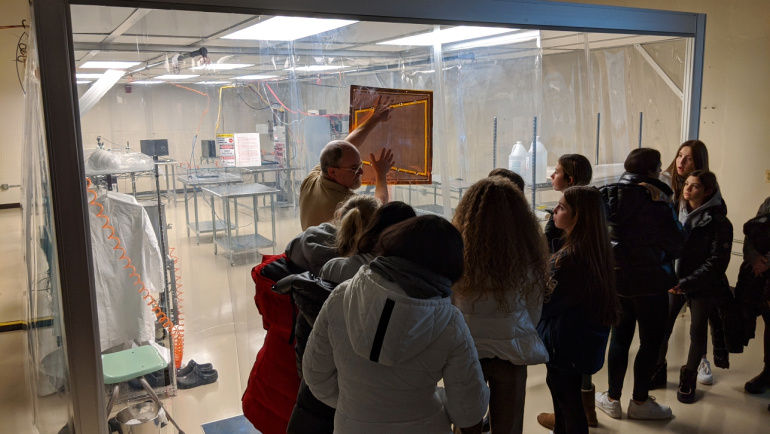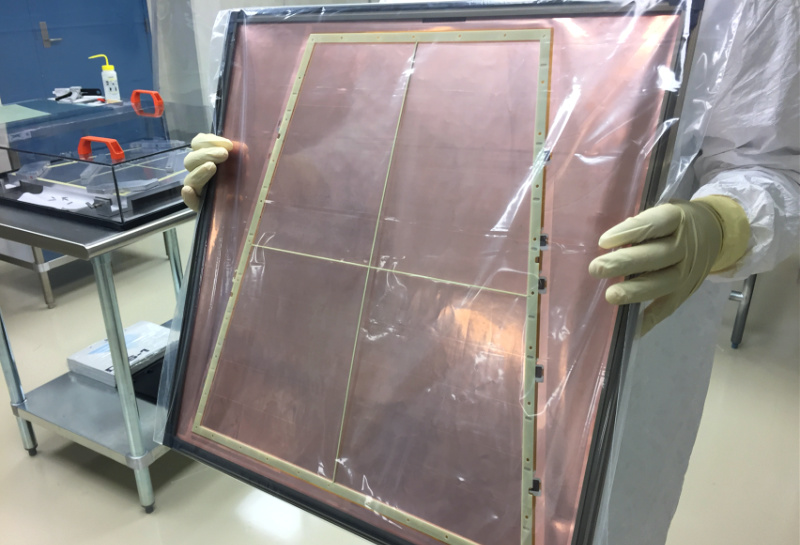
The nuclear physics group at Wayne State University recently completed a major upgrade to one of the giant particle detectors at CERN, the world's largest and most powerful particle accelerator, located in Switzerland. This upgrade, built in the basement of the Wayne State Physics Building, will allow researchers to study the types of extreme matter that was present shortly after the universe was formed in the Big Bang.
Major upgrades of the ALICE experiment (A Large Ion Collider experiment) - a detector dedicated to heavy-ion physics at the CERN Large Hadron Collider – are in progress to speed up the data readout speed and sharpen the resolution.
One such upgrade to the ALICE Time Projection Chamber (TPC) has been completed, including new detectors fabricated and tested at Wayne State University. To accomplish this work, a new clean room was built in Wayne State's Physics Building in 2015 with support from the Office of the Vice President for Research, the College of Liberal Arts and Science, and the physics department. This enabled construction funding from the U.S. Department of Energy (DOE) from 2016 to 2019, which supported the fabrication of the Gas Electron Multiplier (GEM) foils needed to update the ALICE TPC.

The foils were recently invented at CERN and provide factors of 100 in readout speed of the TPC, considerably reducing various backgrounds that make exciting new physics results less certain. The downside to this GEM technology is that these detectors can be killed by invisible pieces of dust. The detectors must therefore always be handled and tested in the cleanest possible environments, which is why Wayne State’s new clean room was created.
The fabrication and testing of the final GEM detectors for the ALICE TPC was performed from 2017 to 2019 by Oleg Grachov and Fred Pompei (now retired). The DOE project called for the fabrication of the 160 GEM foils needed for 40 GEM chambers (four foils/chamber, with four spares) using foils from CERN and special frames built by industry. It was soon realized that the frames could be built better and cheaper in house at Wayne State.
The work at Wayne State ended about a year ago with the completion of more than 200 usable framed foils and a total of 47 TPC GEM chambers ready to install into the ALICE TPC. Once the new detectors were installed, the newly renovated TPC was extensively tested for several months. The TPC was recently lowered into position 600 feet below the ground in the ALICE interaction hall, marking the successful completion of the TPC upgrade.
Grachov now uses the clean room for very similar work to fabricate the TPC for the new sPHENIX detector at the Relativistic Heavy-Ion Collider at Brookhaven National Laboratory. The upgraded ALICE, and sPHENIX, both with a TPC built in part at Wayne State, will provide new and unique data for numerous explorations of the physics of strongly interacting matter.
The research at Wayne State University is being conducted by Professors William Llope, Claude Pruneau, Joern Putschke and Sergei Voloshin.
